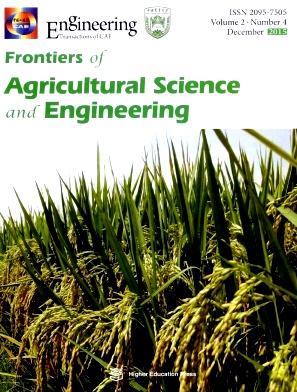ASSESSMENT OF HEAVY METALS IN HYDROCHAR PRODUCED BY HYDROTHERMAL CARBONIZATION OF DAIRY MANURE
IF 2.8
4区 农林科学
Q1 AGRONOMY
引用次数: 0
Abstract
乳粪水热炭化产烃类中重金属的评价
●碳氢化合物中重金属含量变化很大,从50%到100%不等。●碳氢化合物中的重金属浓度可能高于牛粪中的重金属浓度。●碳氢化合物中的重金属浓度远低于规定水平。从奶牛粪便中产生的碳氢化合物是一种受管制的生物固体,如果推广用于农业应用,因此必须具有符合所有环境标准和政府法规的特性,包括重金属(HMs)水平。本研究通过中心组合设计和统计分析,系统研究了奶牛粪便中氢炭中的HM含量,以及处理温度(180 ~ 255℃)、保温时间(30 ~ 120 min)和粪便浆料固含量(2% ~ 15%)等处理条件对HM含量的影响。研究发现,HMs在烃类中可保留40% ~ 100%。加工温度和进料中固体含量是影响HMs在烃类中保留率的主要工艺参数。统计分析表明,在一定的处理时间和固体含量下,没有单一的最优点来最小化烃类中残留的HMs,但存在最小化点。大多数HMs在碳氢化合物中的浓度高于最初在牛粪中的浓度,但远低于美国政府规定的阈值。因此,碳氢化合物作为富磷有机肥和/或土壤改良剂用于农业应用是可行的,而不必严重担心它可能含有HMs。
本文章由计算机程序翻译,如有差异,请以英文原文为准。
求助全文
约1分钟内获得全文
求助全文
来源期刊
CiteScore
5.10
自引率
2.70%
发文量
33
期刊介绍:
Frontiers of Agricultural Science and Engineering (FASE) is an international journal for research on agricultural science and engineering. The journal’s aim is to report advanced and innovative scientific proceedings in agricultural field including Crop Science, Agricultural Biotechnology, Horticulture, Plant Protection, Agricultural Engineering, Forestry Engineering, Agricultural Resources, Animal Husbandry and Veterinary Medicine, Applied Ecology, Forestry and Fisheries. FASE is committed to provide a high level scientific and professional forum for researchers worldwide to publish their original findings and to utilize these novel findings to benefit the society.

 求助内容:
求助内容: 应助结果提醒方式:
应助结果提醒方式:


